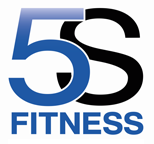Core Stability Is the integration of the Passive Spinal Column, the Active Spinal Muscles and the Neural Control Unit.
The passive spinal column consists of the spinal ligaments and the facet articulations between the adjacent vertebrae.
The active spinal muscles are split down into two categories, global and local, global being the larger superficial muscles such as the Rectus Abdominis, Internal and External Oblique’s, Erector Spinae and Quadratus Lumborum and local being the smaller, deep muscles that control the more intricate movement of the vertebrae such as the Multifidus, Rotatores, Interspinal and Intertraverse.
The neural control unit continuously adjusts the muscles in relation to the information received from the Muscle Spindles, Golgi Tendon Organs and spinal ligaments.
When it comes to training the core people tend to just think about ab exercises such as sit ups and isometric holds such as plank variations. There’s no denying that these exercises have their benefits and they are often a great way to transition into the cool down after a hard session… However are these exercises really the best way to develop the core? (When people think core… They rarely think about the musculature of the lower back)
If the question was “Which exercises work your core the hardest?” then sit up and plank variations would be far from the top of the list… A simple weighted squat will have your core engaging far more than any sit up or plank… So if there’s harder ways to train the core why bother with these exercises?
Well in all honesty there are a lot of strength professionals out there that don’t. There are far more beneficial ways to work the core, whilst being far more functional at the same time (Its not often in day to day life or sport where we have to hold a plank position).
Realistically one of the major reasons personal trainers add in plenty of ab and core work into their sessions is because that’s what their clients want (The misguided belief that sit ups are the best way to achieve a flat stomach or six pack abs)… Yes a lot of specific core exercises are beneficial especially when it come to clients with low ability levels, previous injuries or certain limitations, but realistically if you can have your client performing compound lifts with a good resistance, loading the individuals body whilst performing functional movement patterns, then your going to end up with a far stronger, far more functional individual… The core should be getting engaged / trained throughout a training session, regardless of what the session involves.
In summary there’s nothing wrong with adding in a little specific core work to the end of the session (Even the strongest of athletes should go back to basics from time to time) but if you want to truly build a strong, stable and functional core, then the best way to go about it is by bracing the core, loading your body with resistance and performing Squat, Lunge, Bend (Hinge), Push, Pull, Twist, Gait (Walk/Run) – The 7 Basic Human movement patterns… Basically, train your core whilst you train!

